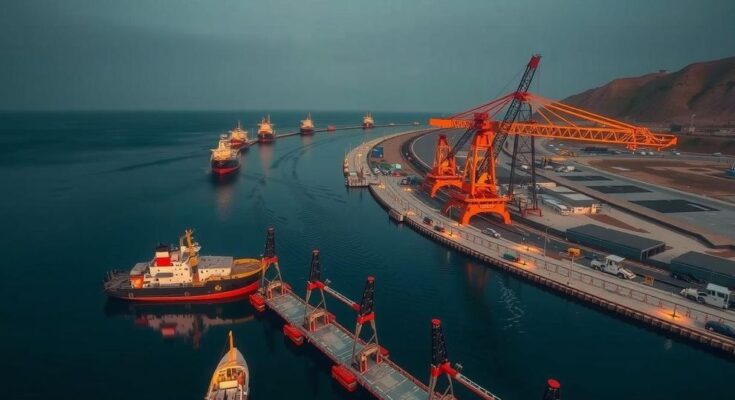The Suez Canal, opened on November 17, 1869, revolutionized global trade by connecting the Red Sea to the Mediterranean and cutting travel distances for ships by up to 7,000 km. Despite its tumultuous history, including geopolitical crises and recent disruptions like the MV Ever Given blockage, it remains a crucial maritime artery, facilitating 12% of global commerce and emphasizing our interconnected economic landscape.
The Suez Canal, inaugurated on November 17, 1869, serves as a remarkable engineering marvel, connecting the Red Sea to the Mediterranean and effectively shortening maritime routes between Asia and Europe by approximately 7,000 kilometers. Crafted through vision and ambition, it became a pivotal artery of global trade, now channeling about 12% of world commerce. The canal’s storied history stretches back to ancient times but was formally realized during the colonial era through the tenacious efforts of French engineer Ferdinand de Lesseps, despite notorious setbacks like the tumultuous Suez Crisis in 1956. Over the ages, the Suez Canal has witnessed far more than just the flow of trade; it has been at the center of geopolitical upheaval and economic lifeblood. While originally built as a French endeavor, its control became a point of contention among European powers, with Britain and France engaging in the Suez Crisis against burgeoning Egyptian nationalism under President Gamal Abdel Nasser. Despite significant historical interruptions—like the closure during the wars of the late 1960s—the canal’s strategic importance has persisted, underscoring its role in global trade networks. The canal’s choppy waters recently reminded the world of its economic significance during the MV Ever Given incident in March 2021, when the ship’s blockage temporarily halted maritime commerce for six days, costing an estimated $400 million each hour in delayed goods. With over 20,000 vessels navigating its waters yearly, carrying about 30% of daily container traffic, it underscores the fragility and interdependence of modern global markets. As nations engage in a dance with their economic destinies, the Suez Canal remains a vital link—an embodiment of human ingenuity and a stage for the ongoing saga of trade, power, and resilience on the world’s waters.
The Suez Canal is often regarded as one of the most crucial waterways in international trade, connecting Europe and Asia. Its construction marked a significant technological advance during the 19th century, playing a pivotal role in shaping global commerce by dramatically reducing travel distance for maritime shipping. Originating from antiquity, the modern version of the canal took years of lobbying and engineering, ultimately leading to an extraordinary impact on economic dynamics, geopolitical relationships, and the evolution of maritime routes.
In summary, the Suez Canal stands as an eminent testament to human resilience and ambition, weaving through centuries of history that highlight its developmental and economic significance. From ancient trade routes to a modern economic artery, its currents have lifted nations and economies alike. The challenges it has faced, from wars to blockages, only serve to reaffirm its indispensable role in our interconnected world. This 193-km waterway carries not just ships, but the very essence of global trade through its corridors—forever defining the relationship between East and West.
Original Source: indianexpress.com



